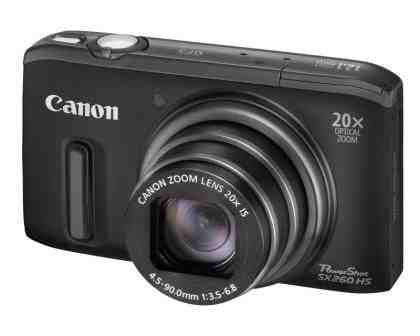The Canon PowerShot SX230 HS was our favourite pocket ultra-zoom camera of 2011. Rival cameras offered bigger zooms, faster performance, fancier shooting modes and sharper screens, but the SX230 HS's image quality was head-and-shoulders above the competition, especially in low light.

This year's updated model shows some shrewd judgement on Canon's part. The sensor appears to be the same 12-megapixel back-illuminated CMOS chip that played a starring role in the SX230 HS, delivering the lowest noise levels we've ever seen from a pocket ultra-zoom camera. The lens has been significantly redesigned, though, with an increased zoom range up from 14x to 20x zoom. The 25-500mm (equivalent) focal length range means it excels for both wide-angle and telephoto photography – not bad for a camera that measures just 33mm thick when powered down. Canon isn't alone here, though, with rival cameras' zooms weighing in at between 18x and 24x.

The windows on the house reveal sharp focus in this telephoto shot, but there's quite a lot of blue and red spill either side of the fishermen – evidence of chromatic aberrations - click to enlarge
Huge zooms are only useful if focus is up to scratch. Here, the SX260 HS put in a mixed performance. Wide-angle shots were excellent, with crisp focus into the corners of frames and precise handling of subtle details. As we zoomed in, there was evidence of chromatic aberrations, giving a halo of discoloration to high-contrast lines and a slight vagueness to other details. We also noticed some blooming at long focal lengths, giving a hazy glow to brighter parts of the image. These problems were reasonably mild, though, and largely disappeared when we resized photos to fit a 1080p monitor.

Noise here is incredibly low for an indoor photo taken at ISO 3200 - click to enlarge
Along with the superb sensor and Canon's usual knack for well-judged automatic exposures, we'd class outdoor photo quality as consistently above average and often excellent. Its low-noise sensor fared came into its own for indoor photography, even outperforming the SX230 HS. We suspect this is down to more efficient noise reduction from the newer DIGIC 5 processor.











